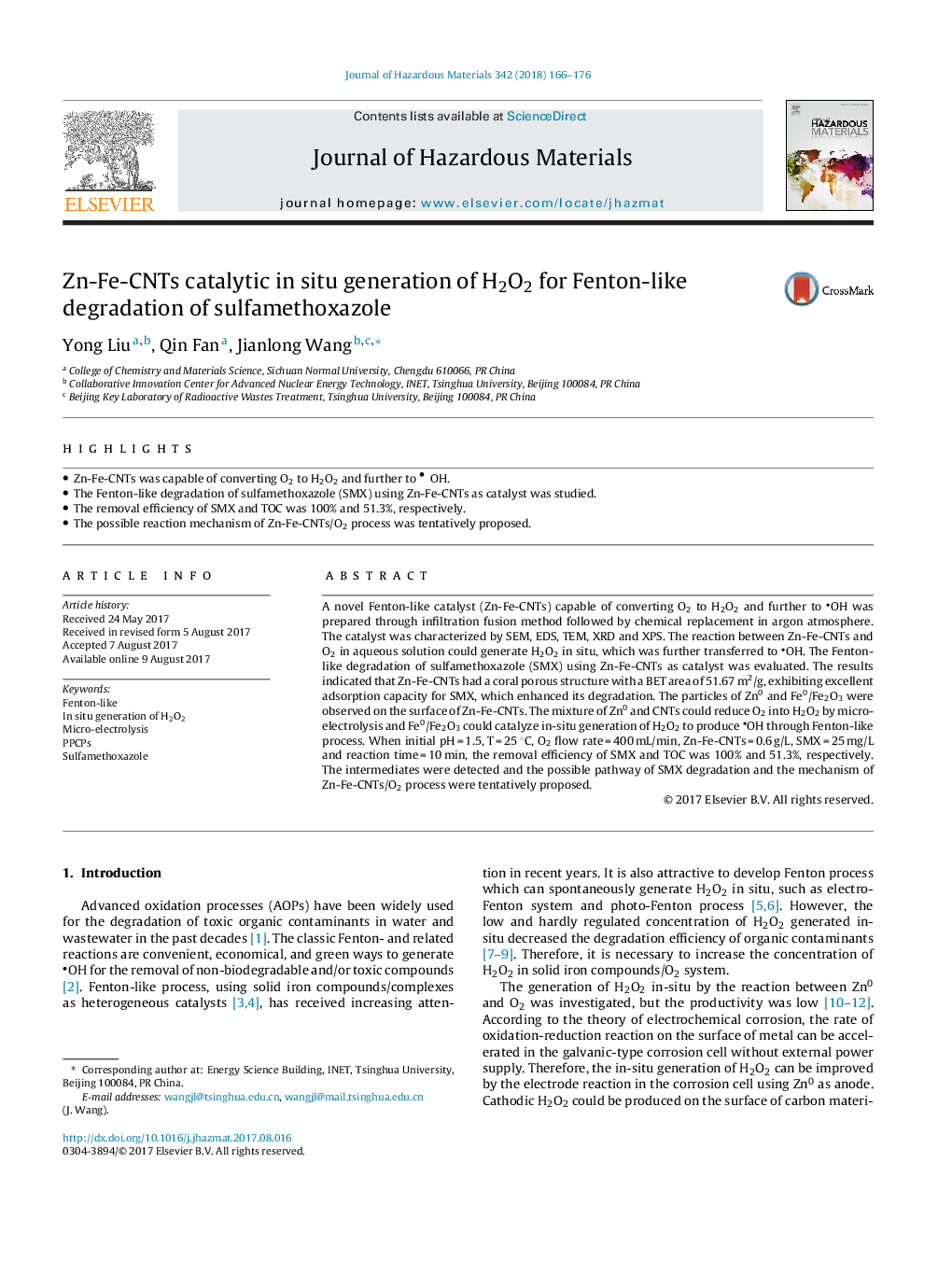| Article ID | Journal | Published Year | Pages | File Type |
|---|---|---|---|---|
| 4979073 | Journal of Hazardous Materials | 2018 | 11 Pages |
Abstract
A novel Fenton-like catalyst (Zn-Fe-CNTs) capable of converting O2 to H2O2 and further to OH was prepared through infiltration fusion method followed by chemical replacement in argon atmosphere. The catalyst was characterized by SEM, EDS, TEM, XRD and XPS. The reaction between Zn-Fe-CNTs and O2 in aqueous solution could generate H2O2 in situ, which was further transferred to OH. The Fenton-like degradation of sulfamethoxazole (SMX) using Zn-Fe-CNTs as catalyst was evaluated. The results indicated that Zn-Fe-CNTs had a coral porous structure with a BET area of 51.67 m2/g, exhibiting excellent adsorption capacity for SMX, which enhanced its degradation. The particles of Zn0 and Fe0/Fe2O3 were observed on the surface of Zn-Fe-CNTs. The mixture of Zn0 and CNTs could reduce O2 into H2O2 by micro-electrolysis and Fe0/Fe2O3 could catalyze in-situ generation of H2O2 to produce OH through Fenton-like process. When initial pH = 1.5, T = 25 °C, O2 flow rate = 400 mL/min, Zn-Fe-CNTs = 0.6 g/L, SMX = 25 mg/L and reaction time = 10 min, the removal efficiency of SMX and TOC was 100% and 51.3%, respectively. The intermediates were detected and the possible pathway of SMX degradation and the mechanism of Zn-Fe-CNTs/O2 process were tentatively proposed.
Related Topics
Physical Sciences and Engineering
Chemical Engineering
Chemical Health and Safety
Authors
Yong Liu, Qin Fan, Jianlong Wang,
